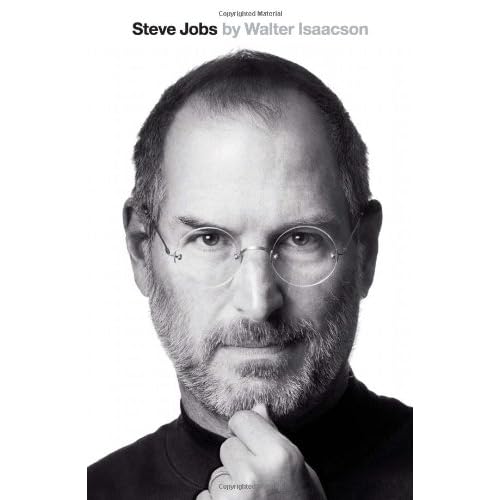
(Image from Amazon.ca)
Score: 4.5/5
I first got interested in Steve Jobs when playing with my friend’s iPod touch a few years ago. It was my first serious encounter with an Apple product. Though my initial reaction was “it’s just a fancified Walkman”, I was soon eager to try out all the function on the device and declared to my friend that I wanted one for myself.
I was intrigued and attracted to the device not only because it had a beautiful hardware and software interface, but also the entire user experience “flowed” graciously. The hassle of trying to figure out how to use the device is replaced with the joy of seeing yourself performing the functions without prior instructions, and the entire experience has consistency and elegance to it. It’s like being checked into a 5 star hotel by an fashionable, courteous, and experienced receptionist. So I wondered – what type of person does it take to create such a device and how did he do it?
Isaacson is a masterful writer who provided a balanced account of Jobs that is easy and delightful to read. At 571 pages it can feel long at times, but it’s a small price to pay for completeness. I highly recommend the book.
It would be naive to think this book is the definitive guide to being Steve Jobs, but there are many thought provokers in the book. This is what I derived from after reading the book:
- Much of Steve’s genius is in his ability as an editor. He may not know how to use a computer to draw out the specifications that engineers can understand, but he knew intuitively and logically what the customers wanted, how much they wanted them, who he can entrust to come up with solutions, and recognize a good solution when it is presented and present it to customers in an attractive and relatable way. Malcolm Gladwell says it very well here.
- Steve’s idea of design isn’t just aesthetic, it’s also philosophical. The goal of design is to create a beautiful and useful user experience, using both form and function to achieve that goal. I think he understands that though aesthetics can generate hype, tools that people find useful and easily accessible is what gives sustainable attachment. He often thought deeply and philosophically about what is the “essence” of the things he creates.
- One of Steve’s greatest contributions is design education – how technology can be “sexy”, and what beauty can mean in retail, movies, computer hardware, and software. Design has gotten more legitimacy and taken on more concrete form in the many industries, I think thanks to Steve. He also showed that art and technology can be a powerful combination, that the creative talents at Pixar are very disciplined, and that the software engineers at Apple can be really imaginative.
Ultimately, I wondered if Steve felt truly happy or fulfilled. He was certainly driven and cared deeply about his company, yet whether that gave him the satisfaction in return isn’t as clear to me. Steve is probably the only one with the answer.
I will let Steve end this post. Below is a quote of him about what motivates him to do his work:
What drove me? I think most creative people want to express appreciation for being able to take advantage of the work that’s been done by others before us. I didn’t invent the language or mathematics I use. I make little of my own food, none of my own clothes. Everything I do depends on other members of our species and the shoulders that we stand on. And a lot of us want to contribute something back to our species and to add something to the flow. It’s about trying to express something in the only way that most of us know how – because we can’t write Bob Dylan songs or Tom Stoppard plays. We try to use the talents we do have to express our deep feelings, to show our appreciation of all the contributions that came before us, and to add something to that flow. That’s what has driven me.
No comments:
Post a Comment